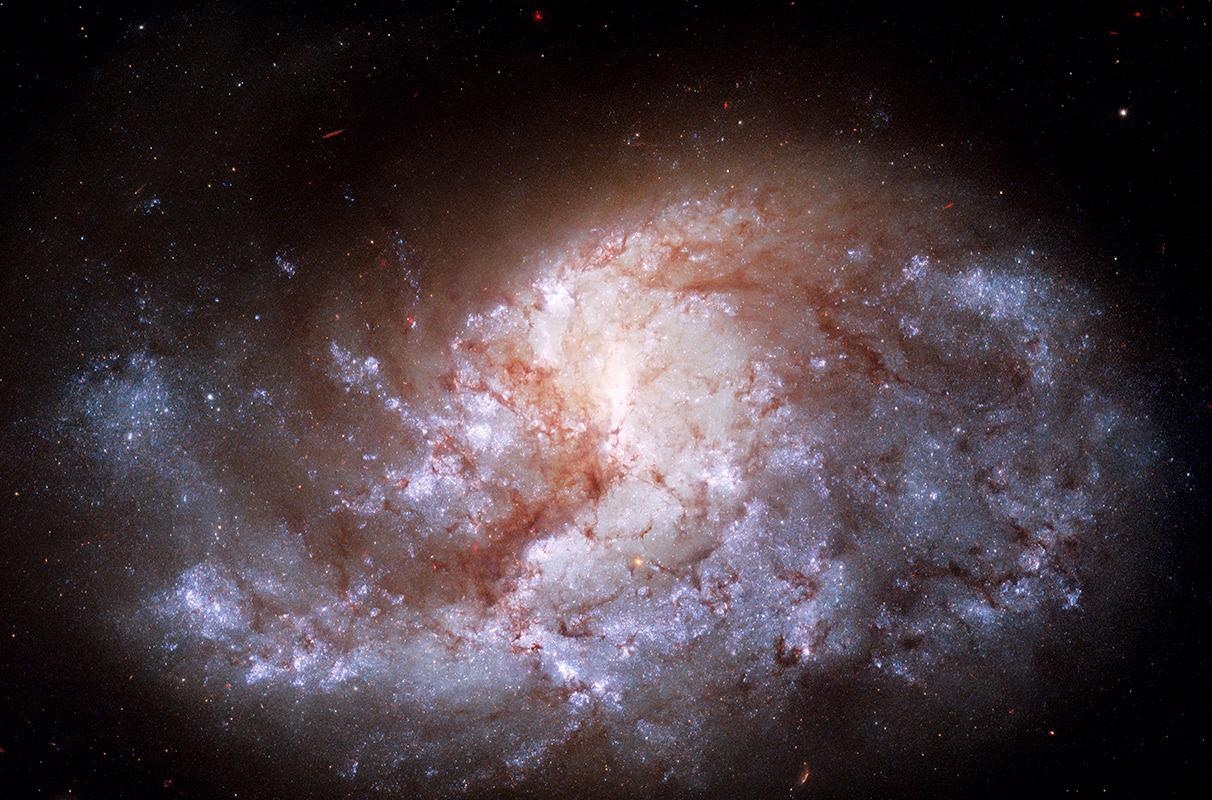Medium‑sized black holes are extremely hard to detect, but new research has suggested that some may be located at the center of dense star clusters that are situated throughout the universe.
 Galaxy NGC 1385 is one of the 29 galaxies in the sample that showed evidence of growing black holes near their centers. Image Credit: NASA/ESA/STScI.
Galaxy NGC 1385 is one of the 29 galaxies in the sample that showed evidence of growing black holes near their centers. Image Credit: NASA/ESA/STScI.
The study provides new insight into where and when black holes of approximately 100–100,000 solar masses could develop and how they evolved. Details of the study have been published recently in the Astrophysical Journal.
One of the biggest open questions in black hole astrophysics right now is how do black holes form that are between the size of a stellar mass black hole and a supermassive black hole. Most of the theories for their formation rely on conditions that are found only in the very early universe. We wanted to test another theory that says they can form throughout cosmic time in these really dense star clusters.
Vivienne Baldassare, Study Lead Author and Assistant Professor of Physics and Astronomy, Washington State University
For several years, astronomers have spotted smaller black holes identical in mass either to a few suns or enormous black holes with a mass close to millions of suns but the missing link of black holes in between those sizes has escaped discovery.
The presence of these intermediate-sized or enormous black holes has long been conjectured but discovering them has proven challenging as the light discharged by objects falling into them is not easy to spot.
To resolve this challenge, the researchers used the Chandra X-Ray Observatory, the most robust X-Ray telescope in the world, to hunt for X-Ray signatures of black holes in nuclear star clusters in 108 diverse galaxies.
Chandra is basically the only instrument in the world that is able to do this kind of work. It is able to pinpoint the locations of X-Ray sources very precisely, which is important when you are looking for black hole signatures in these very compact nuclear star clusters.
Vivienne Baldassare, Study Lead Author and Assistant Professor of Physics and Astronomy, Washington State University
Nuclear star clusters can be seen at the midpoint of most low-mass or small galaxies and are the densest known stellar atmospheres. Earlier research has located the existence of black holes in nuclear star clusters but not much is known about the precise properties that make these areas favorable for the development of black holes.
Baldassare and colleagues’ examination revealed that nuclear star clusters that were above a specific mass and density threshold produced the X-Ray signatures suggestive of a black hole at two times the rate of those under the threshold. Their study also offers the first observational proof backing the theory that intermediate-sized black holes can develop in nuclear star clusters.
“Basically, it means that star clusters that are sufficiently massive and compact should be able to form a blackhole,” Baldassare stated. “It is exciting because we expect many of these black holes to be in the intermediate mass regime between supermassive black holes and stellar mass black holes where there is very little evidence for their existence.”
The study not only proposes that intermediate-sized black holes can develop in nuclear star clusters but also shows a mechanism by which they could possibly develop throughout cosmic time instead of just during the first few billion years of the universe.
One of the prevailing theories out there is that massive black holes could only have formed during the early universe when things were more dense. Our research is more consistent with the picture where massive blackholes don’t need to form in the very early universe but could rather continue to form throughout cosmic time in these particular environments.
Vivienne Baldassare, Study Lead Author and Assistant Professor of Physics and Astronomy, Washington State University
Going forward, the scientists are interested in continuing to use Chandra to gather X-Ray measurements of nuclear star clusters with the crucial goal of gaining more information about the exact circumstances in which massive black holes can develop.
Journal Reference:
Baldassare, F.V., et al. (2022) Massive Black Hole Formation in Dense Stellar Environments: Enhanced X-Ray Detection Rates in High-velocity Dispersion Nuclear Star Clusters. Astrophysical Journal. doi.org/10.48550/arXiv.2203.02517.